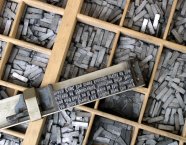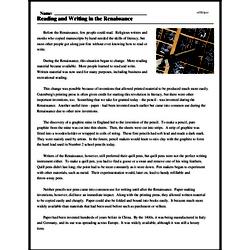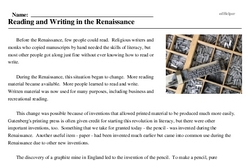Reading and Writing in the Renaissance
Before the Renaissance, few people could read. Religious writers and monks who copied manuscripts by hand needed the skills of literacy, but most other people got along just fine without ever knowing how to read or write.
During the Renaissance, this situation began to change. More reading material became available. More people learned to read and write. Written material was now used for many purposes, including business and recreational reading.
This change was possible because of inventions that allowed printed material to be produced much more easily. Gutenberg's printing press is often given credit for starting this revolution in literacy, but there were other important inventions, too. Something that we take for granted today - the pencil - was invented during the Renaissance. Another useful item - paper - had been invented much earlier but came into common use during the Renaissance due to other new inventions.
The discovery of a graphite mine in England led to the invention of the pencil. To make a pencil, pure graphite from the mine was cut into thin sheets. Then, the sheets were cut into strips. A strip of graphite was fitted into a wooden holder or wrapped in coils of string. These first pencils had soft lead and made a dark mark. They were mainly used by artists. In the future, pencil makers would learn to mix clay with the graphite to form the hard lead used in Number 2 school pencils today.




